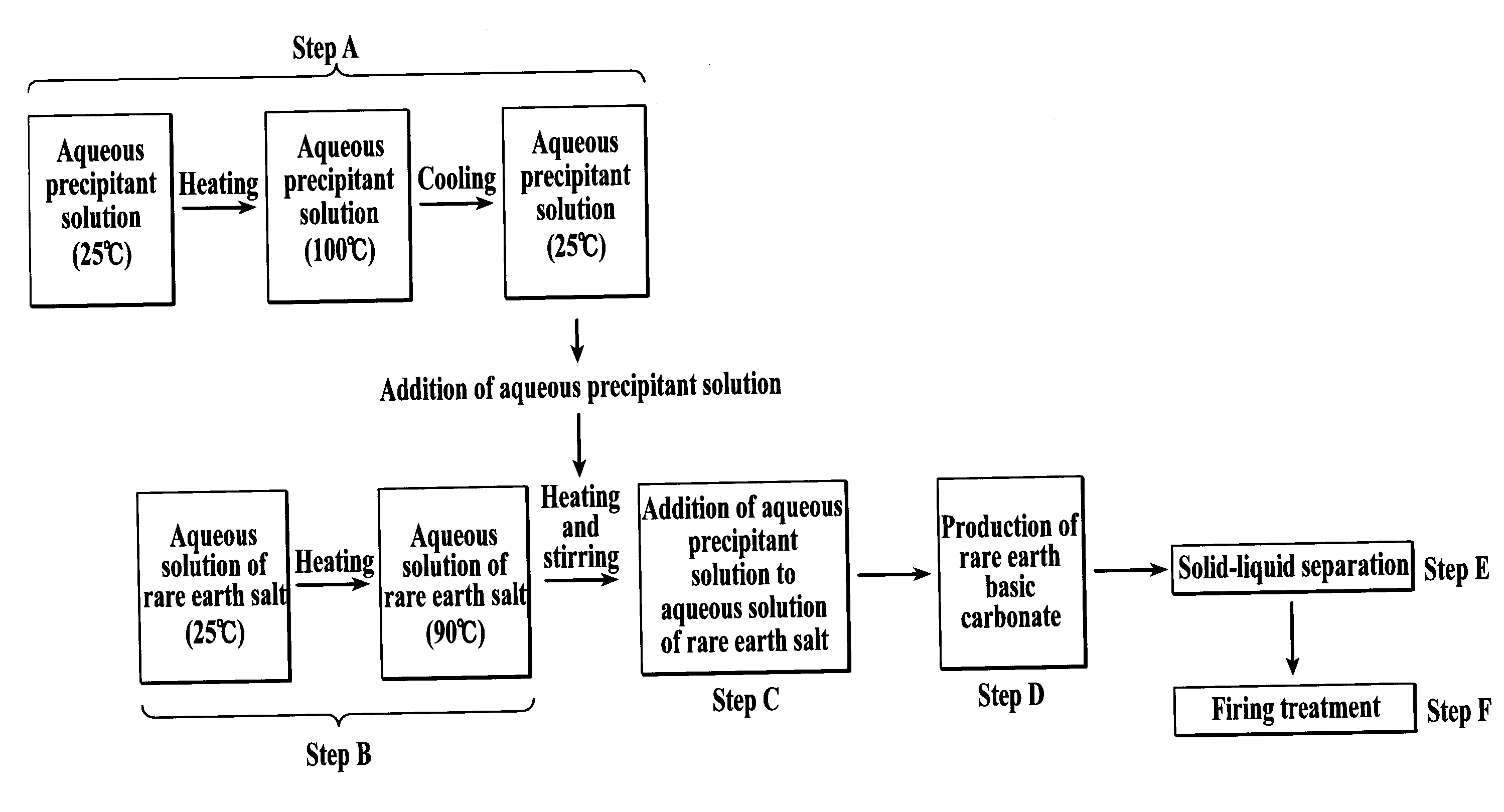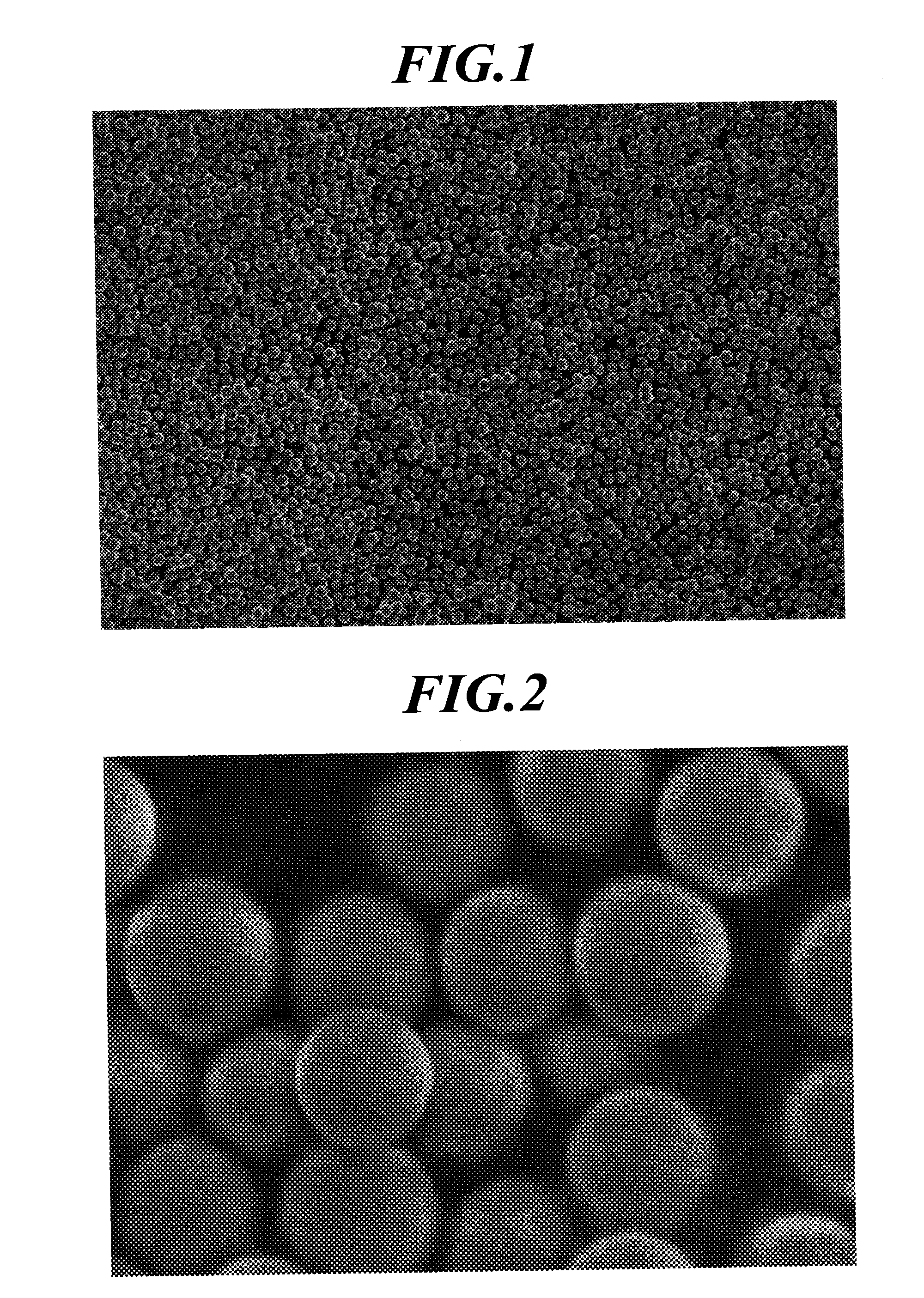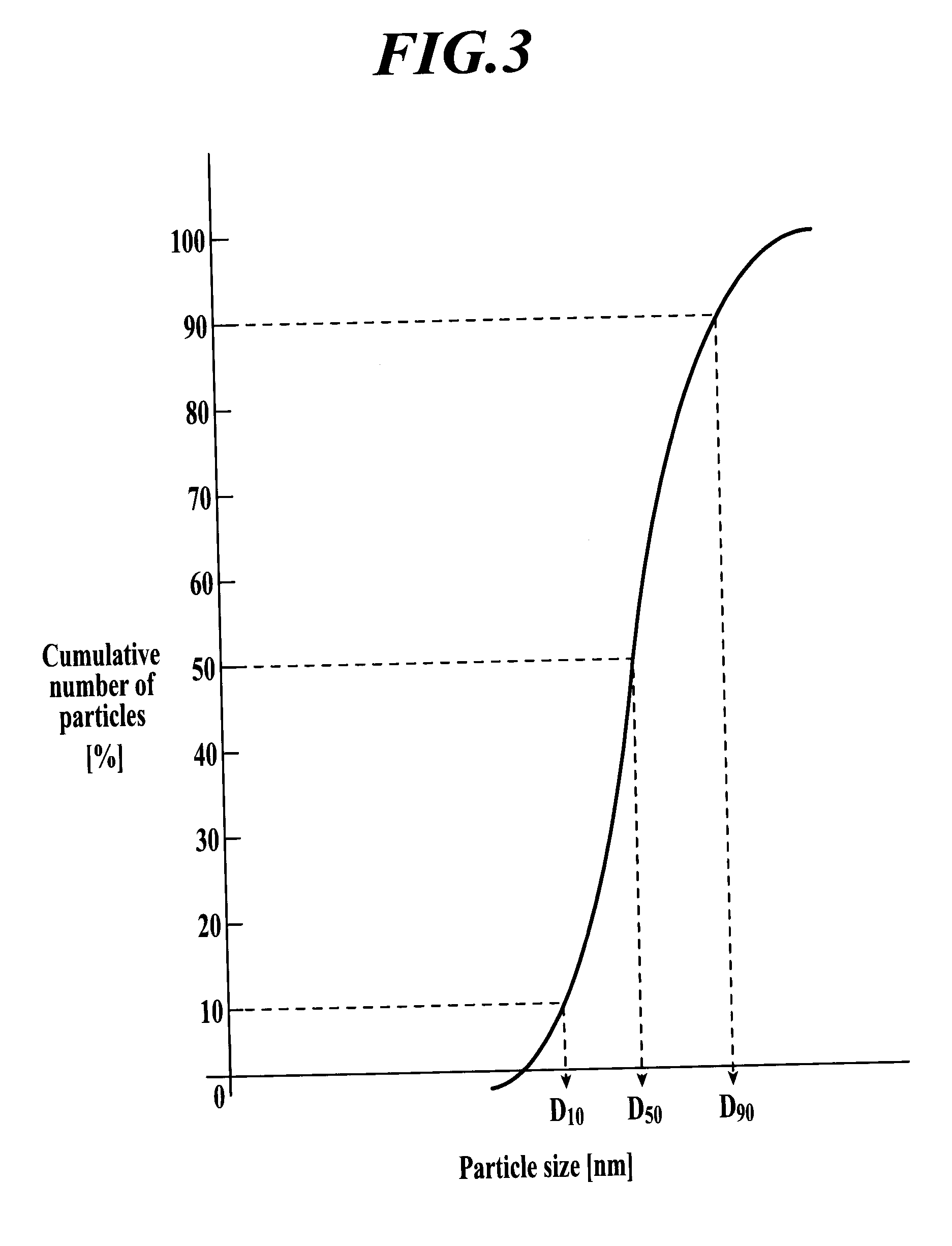Cerium Oxide Abrasive, Method for Producing Cerium Oxide Abrasive, and Polishing Method
a cerium oxide and abrasive technology, applied in the direction of lanthanide oxide/hydroxide, lapping machines, other chemical processes, etc., can solve the problems of reducing productivity of multi-stage polishing process, increasing polishing rate etc., to achieve high sphericity, high polishing performance, and easy scratching of workpiece surfaces
- Summary
- Abstract
- Description
- Claims
- Application Information
AI Technical Summary
Benefits of technology
Problems solved by technology
Method used
Image
Examples
example 1
[0261]An exemplary abrasive material according to a preferred embodiment of the present invention comprising cerium oxide abrasive particles having an average content of trivalent cerium within the range of 5 to 40 mol % of the total cerium content in the surface region ranging from the outermost layer of each cerium oxide abrasive particle to a depth of 10 nm toward the center of the particle will be described in Examples 1 and 2 below.
[0262]>
[Preparation of Abrasive Particle 1: Core-Shell Abrasive Particles]
[0263]Abrasive particle 1 of a core-shell type was prepared according to the following steps (1) to (5):
[0264](1: Formation of Seed Crystals)
[0265]An aqueous solution of 0.02 mol / L yttrium(III) nitrate (hereinafter simply referred to as aqueous yttrium nitrate solution) (2 L) was prepared, and urea was added to the aqueous solution such that the concentration was 0.60 mol / L. A reaction solution was thereby prepared. This reaction solution was heated at 90° C. with stirring to f...
example 2
>
[Preparation of Abrasive Particle 17: Homogeneous Abrasive Particles]
[0324]Abrasive particle 17 was prepared by the following procedure.
[0325](Step A) An aqueous solution (0.5 L) of 5.0 mol / L urea was prepared, and was heated in a sealed container at 100° C. for six hours. Aqueous urea solution 1 was then cooled to room temperature (step A in FIG. 5).
[0326](Step B) Pure water was added to an aqueous solution (150 mL, 75 mol %) of 1.0 mol / L cerium nitrate and an aqueous solution (50 mL, 25 mol %) of 1.0 mol / L yttrium nitrate to prepare aqueous solution 1 of a salt of a rare earth element (9.5 L). Aqueous solution 1 of a salt of a rare earth element was heated to 90° C. (step B in FIG. 5).
[0327](Step C) Aqueous urea solution 1 (20° C.) prepared (step A) was added to Aqueous solution 1 of a salt of a rare earth element heated to 90° C. at a rate of 1 L / min over 30 seconds to prepare a mixed solution. In this step, nuclear particles were formed (step C in FIG. 5).
[0328](Step D) The mix...
example 3
[0342]An exemplary method for producing a cerium oxide abrasive material according to a preferred embodiment of the present invention will be described in Example 3 below, in which the pH at the reaction temperature of the reaction solution is controlled within the range of 4.5 to 7.0 in step 2 (heating a reaction solution to prepare an abrasive particle precursor).
[0343]
[0344]Core-shell abrasive particle 101 was prepared by the following procedure.[0345](1) An aqueous solution (10 L) of 0.03 mol / L yttrium nitrate was prepared. An aqueous urea solution was prepared, and was mixed with the aqueous yttrium nitrate solution such that the urea concentration was 0.60 mol / L. The mixed solution was heated at 90° C. with stirring to prepare seed crystals.[0346](2) An aqueous solution of 2.4 mol / L yttrium nitrate was added to the reaction solution prepared in Procedure (1) at a rate of 5 mL / min for 65 minutes while being heated at 90° C. with stirring. Cores composed of basic carbonate were ...
PUM
 Login to View More
Login to View More Abstract
Description
Claims
Application Information
 Login to View More
Login to View More - R&D
- Intellectual Property
- Life Sciences
- Materials
- Tech Scout
- Unparalleled Data Quality
- Higher Quality Content
- 60% Fewer Hallucinations
Browse by: Latest US Patents, China's latest patents, Technical Efficacy Thesaurus, Application Domain, Technology Topic, Popular Technical Reports.
© 2025 PatSnap. All rights reserved.Legal|Privacy policy|Modern Slavery Act Transparency Statement|Sitemap|About US| Contact US: help@patsnap.com



